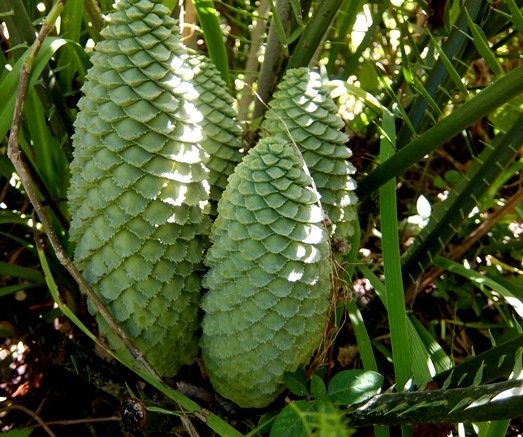Encephalartos villosus green, young and female

Four young, green female cones of Encephalartos villosus were seen, well-shaped and promising in the Stellenbosch University Botanical Garden during March. This is the highest number of cones normally expected from a female plant of this species. The male may produce up to five thinner, longer cones.
As these female cones mature, they will change colour to a deep, shiny yellow-orange. The scale arrangement on the cone surfaces forms smooth curves, maintained during the growth phase until the fruits ripen and drop off. The overlapping scales that cover the fruit are flattish with rounded, toothed margins.
Pollination of these female cones is triggered when the (for people) unpleasant smell exuded by the ripe male cones attracts the specific pollinator weevil, Antliarhinus zamiae.
These beetles feast on the pollen cones and mate there while becoming thoroughly pollen-covered. This hopefully serves for well-chosen, intimate, further cone contact during subsequent exploratory itineraries among the E. villosus plants in the vicinity.
Pollen-distributing relationships between weevils of the Antliarhinus genus and several cycad species have been in existence for many millions of years, from dinosaur days (Pooley, 1998; iNaturalist; www.llifle.com; http://open.uct.ac.za; http://pza.sanbi.org).

